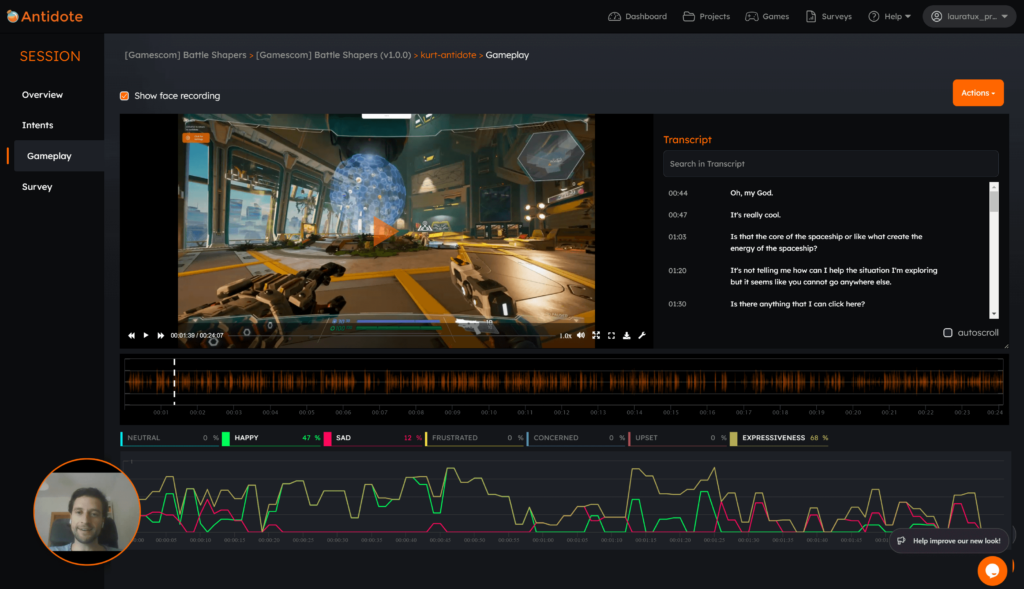What are "Think Aloud Comments"?
Play test feedback plays a major role in user experience (UX) development, and one of the best proven methods for player feedback are think aloud comments, or the active communication of a player’s thoughts as they interact with an interface or game. This feedback style is sometimes described as “eavesdropping on someone’s thinking”, and though this method provides insightful feedback to developers when done correctly, it often feels awkward and unnatural for player’s to try and communicate what you are doing while you are doing it (at first, at least). The purpose of this guide is to explain the basics of think aloud comments and provide helpful advice on how you can further improve your feedback.
Kick-Starting Your Thoughts
Ideally, think aloud comments should verbalize the stream of relevant thoughts that a player is having while interacting with a game. The key term here is “relevant”; only thoughts relevant to the interaction should be actually said, and unrelated comments should be filtered out. For example, talking about what you ate for lunch during a play test does not benefit a developer. However, explaining what you are doing in the game and why you are doing it provides useful information that can be used for further game development.
Sometimes, it seems difficult to determine what can be considered relevant and useful feedback. However, there are some questions you can ask yourself that can start your train of thought on the right track:
- What am I doing within the interface/game, and why?
- What catches my attention?
- How intuitive are the controls and navigation?
- Is there anything that is unnecessarily difficult/confusing?
- Could certain changes create a better user experience? What changes?
These questions serve as a great starting point. As you become more comfortable with think aloud comments, you can begin to provide effective feedback without the help of these questions.
Think Aloud Commentary Example
General Tips
- Practice makes Perfect
- Forming your thoughts into words is a skill, and one that takes practice. At first, you will likely feel silly and inarticulate, and there will probably be a lot of stuttering, stumbling, and error. However, as with all skills, explaining your thoughts will become much easier and more effective with practice. One easy way to improve your think aloud comments is to practice while you are performing everyday tasks. For example, you could say your thoughts while making breakfast in the morning or doing chores. This way, you can also note any bad feedback habits and work on them throughout your day.
- Avoid Distractions
-
- Especially at first, good feedback will require that you focus all of your attention on the playtest, and distractions can create incoherent feedback. The best practice to avoid these is to notify others that you will be busy, silence/turn off your phone, and remove any other potential distractions from the area.
- Be Yourself
- Try and provide feedback from your own perspective. It’s tempting to want to provide feedback from multiple points of view, but you are specifically chosen for a play test based on who developers want feedback from. With this in mind, trying to provide feedback from other perspectives defeats the purpose of the developers choosing their play testers.
Resources:
“Think-Alouds: Classroom Strategy.” Reading Rockets, 3 Jan. 2020, www.readingrockets.org/strategies/think_alouds.
World Leaders in Research-Based User Experience. “Thinking Aloud: The #1 Usability Tool.”
Nielsen Norman Group, www.nngroup.com/articles/thinking-aloud-the-1-usability-tool/.



